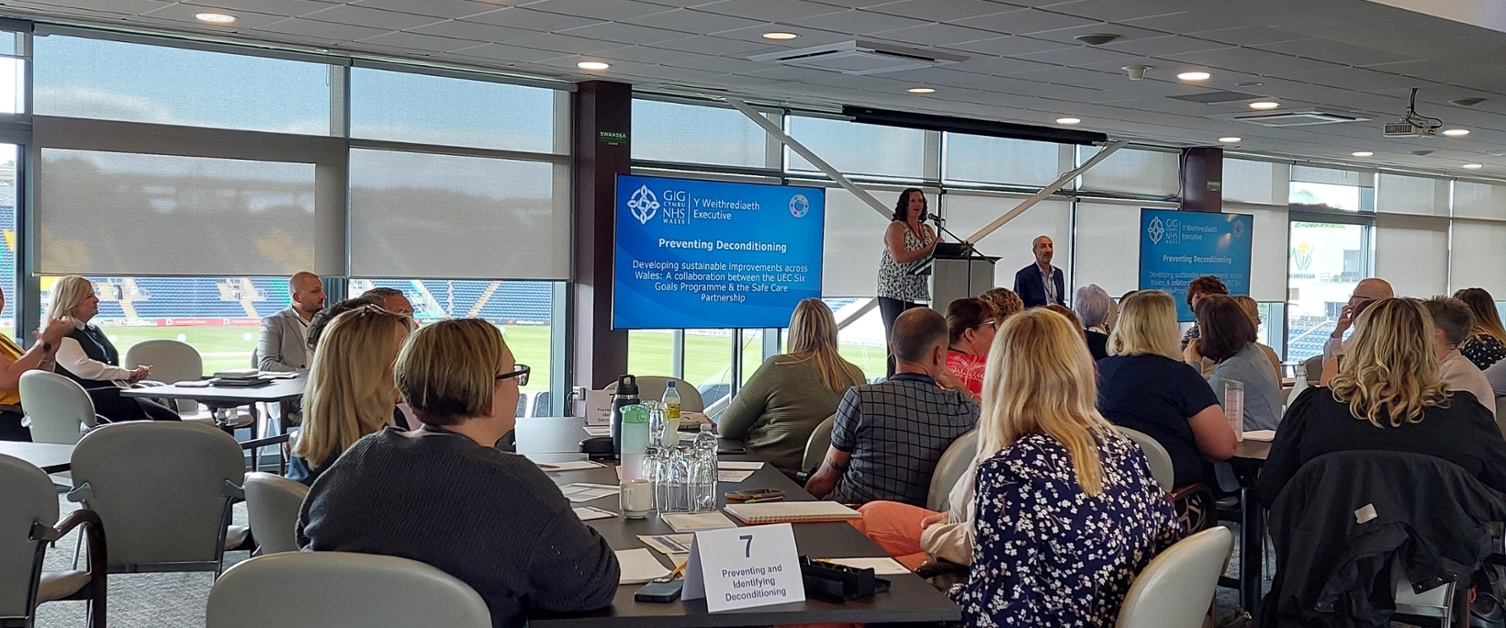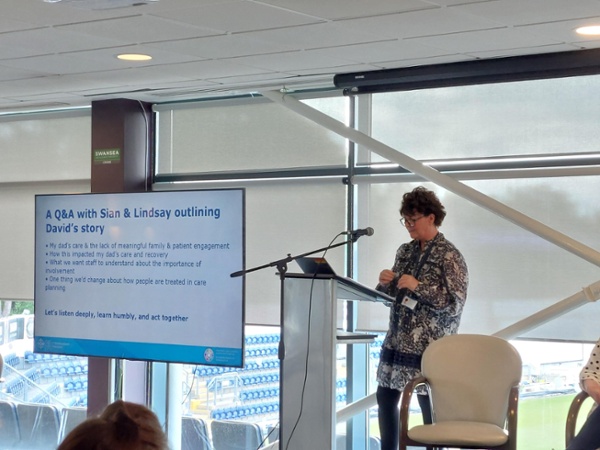Teams across NHS tackle hospital deconditioning as part of new partnership

More than 30 teams across the NHS are taking steps to keep patients from deconditioning when they’re in hospital as part of a partnership between the NHS Wales Executive and health boards and trusts.
Now in its second phase, the Safe Care Partnership creates a protected space where health boards and trusts are coached and supported by the NHS Wales Executive to achieve national quality and safety priorities across their systems.
Deconditioning is one of the partnership’s priority areas and builds upon the work of the Six Goals for Urgent and Emergency Care National Programme. Deconditioning can be described as a decline in a person’s physiological, psychological, and functional abilities caused by complex physical changes, which are often avoidable. Factors such as extended bed rest and associated muscle weakness are contributing factors to a person deconditioning in hospital, which has significant long-term negative effects on a person’s overall health and wellbeing.
Richard Bowen, National Director of the Six Goals for Urgent and Emergency Care programme said, “Preventing deconditioning has been a core component of the work of the six goals programme for the last two years. It is embedded within the optimal hospital flow framework that was first published in December 2022.
“The six goals programme has been working with health boards across Wales during this time to support learning and transformation across the system regarding deconditioning. I am delighted to now be collaborating with the Quality, Safety and Improvement directorate within the NHS Wales Executive to further support this work, which will make a fundamental difference to the patients in our care.”
Deconditioning is identified as a key quality and safety priority by health boards and trusts, the NHS Wales Executive and Welsh Government. Work started in October 2024 to shape the Preventing Deconditioning workstream as part of the next phase of the Safe Care Partnership, through co-design activity with colleagues across NHS Wales and patient representatives.
Since then, the Executive invited colleagues across NHS Wales to join a webinar on deconditioning. Teams explained how deconditioning takes place in the hospital, the effects it has on a patient’s length of stay and overall health, and ideas on how this could be prevented. Attendees also heard from a public contributor who shared her personal experience of deconditioning as a patient but also as a loved one seeing this happen to family and friends.
Attendees were then asked to submit ideas and projects that fit the criteria of preventing deconditioning, as part of an expression of interest process. Successful projects have been taken forward by teams forming a learning collaborative where work is now underway.
Dominque Bird, Acting National Director for Quality Safety and Improvement, NHS Wales Executive, said: “We’re thrilled to more than projects as part of this workstream, including teams joining us from trusts in Bristol and Northern Ireland. Teams will be coached and supported to test small improvements in their areas with a hope of discovering sustainable changes which can be spread and scaled.
“We’ll be following a learning collaborative model where we’ll keep in touch with teams through a mixture of coaching calls and learning sessions. A final learning session is planned for November where teams will present their project findings and learnings which can be shared with the wider system.
“We’re working closely with our public contributor and encouraging project teams to involve people with lived experience as part of their work, so we are receiving direct feedback from those it impacts most. By co-producing this work with service users, our focus upholds patient safety and quality.”
Project teams are working under one of the four main themes of deconditioning which are: prevent and identify deconditioning, promote functional activity, continence management and cognitive function.
Teams are meeting for the first time today (Thursday 8 May) during learning session one where they’re learning more about the science behind deconditioning, practical tips to encourage public and participant participation and starting their project plans.
We’ll continue to publish updates on our website and social media channels as this workstream progresses.
For more information about the Safe Care Partnership, or the Executive’s work, visit the website.









